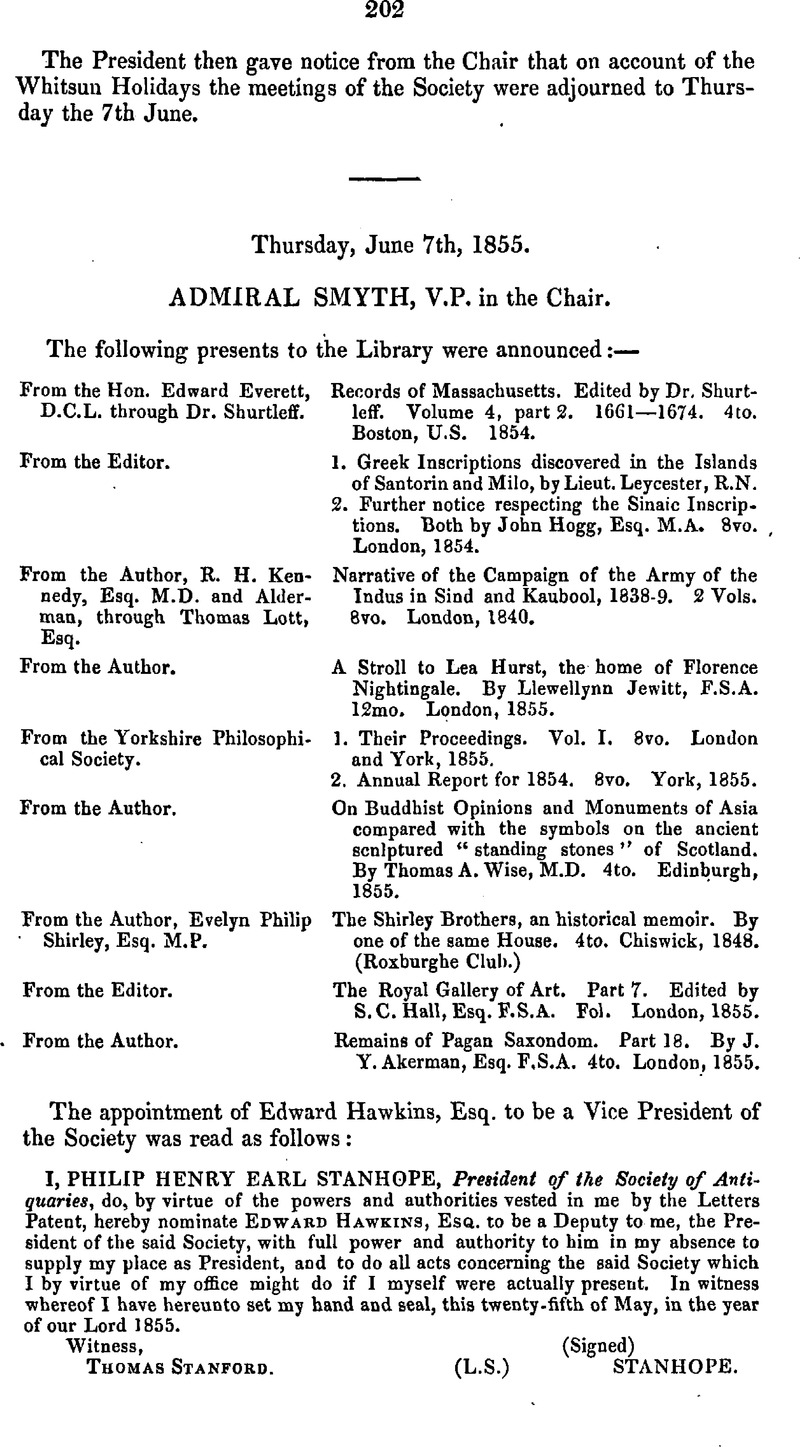No CrossRef data available.
Article contents
Thursday, June 7th, 1855
Published online by Cambridge University Press: 10 May 2010
Abstract

- Type
- Proceedings
- Information
- Copyright
- Copyright © The Society of Antiquaries of London 1856
References
* Among the Loseley MSS is a letter from Thos. Copley of Gatton to Sir Thomas Cawarden, Master of the Revels, dated from Gatton, 18 July, 1558, requesting Sir Thomas secretly to lend him the use of one of his masks for one night against his marriage, which (he says) “in ill hour to him was like to be solemnized on Sunday next at Nonsuch.” He speaks of his marriage so despondingly that we may suppose he considered some maskings or revels necessary to enliven it. His wife was Catharine, eldest of three daughters and coheiresses of Sir John Luttrell.—Kempe's Loseley MSS. 49.
Camden, in his Annals of Queen Elizabeth (translated by R. N. Garter, 1635, p. 181), says, Don Louis Zuniga de Requesens, who succeeded the Duke of Alva in the Netherlands, purposed to employ Sir Thomas Copley (during his exile) under letters of marque, to make prize of the English and the Netherlanders, having loaded him with the titles of Great Master of the Maes, Lord of Gatton and Roughtey. These are merely the names of his English possessions, the first being his manor of the Maze in Southwark, and the others of his other manors in Surrey. The letters of marque are extant in the Loseley Collection, and are granted to him by the name of Don Thomas Copleus. There is also a letter from him to the Sheriff and Justices of Surrey, dated 23 Nov. 1569, demurring to subscribe to the Act for the uniformity of Common Prayer, and insisting on the infallibility of the Church of Rome.—Loseley MSS.




